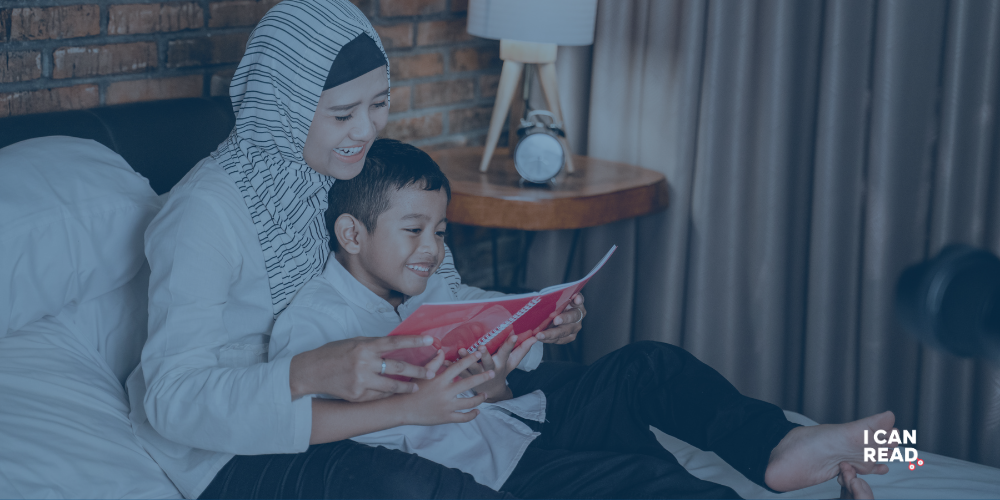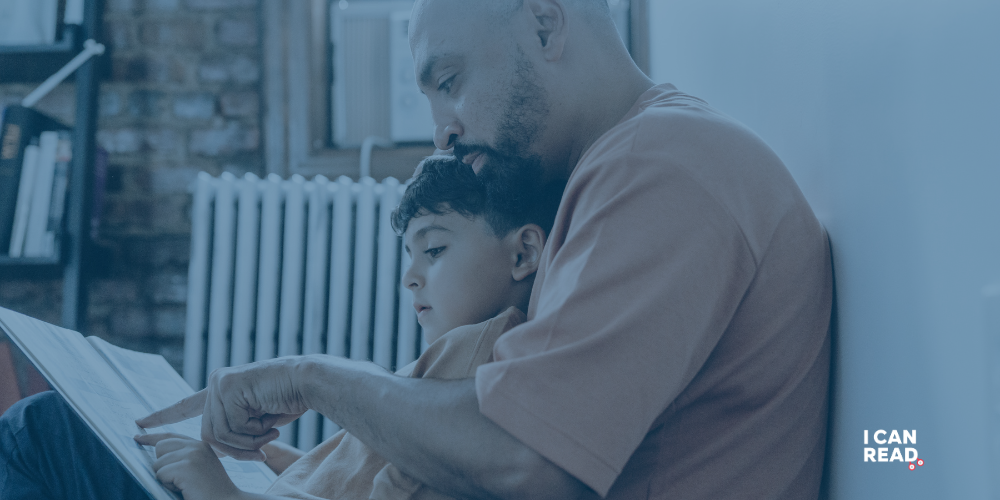![[Featured] Enhancing Literacy in Children for Language Success](https://sg.icanread.asia/hs-fs/hubfs/Blog/Enhancing%20Literacy%20in%20Children%20for%20Language%20Success/%5BFeatured%5D%20Enhancing%20Literacy%20in%20Children%20for%20Language%20Success.png?width=800&height=400&name=%5BFeatured%5D%20Enhancing%20Literacy%20in%20Children%20for%20Language%20Success.png)
Enhancing Literacy in Children to Ensure Language Success
by I Can Read Singapore on 15 Apr 2024
While many believe that focusing on one language during a child's early years is the best way to build literacy skills, research challenges this consensus.
Studies indicate that:
- Bilingual preschoolers often exhibit enhanced skills in understanding others' perspectives, thoughts, desires, and intentions compared to their monolingual counterparts.
- They tend to be better at switching between activities and inhibiting previously learned responses.
In short: implementing multilingual literacy from the earliest stages enhances children's cognitive abilities and cultural awareness, preparing them for the interconnected world they will live in.
In this article, we will explore the benefits of multilingual literacy and how you can integrate it into your child’s learning journey.

What are the Benefits of Multilingual Literacy?
Here are the five key benefits of multilingual literacy.
-
Enhanced cognitive skills
When a child learns multiple languages, their brain is consistently challenged. Switching between languages challenges them, making their problem-solving and critical-thinking skills sharper.
Understanding various language structures also makes them more aware of language details and patterns. This helps their brain work better, making them more adaptable and creative in how they approach different tasks.
-
Better academic performance
Children who know more than one language often do better in school. Learning multiple languages helps them build a richer vocabulary, improves how well they use language and gives them a deeper understanding of how words fit together. These language skills not only help them express ideas clearly but also make them better at reading and writing.
Multilingual kids also tend to be good at solving problems, which comes in handy not just in language arts but also in math and other subjects that need analytical thinking.
-
Cultural understanding
When kids learn different languages, they start to notice the cultural differences tied to each language. This helps them appreciate and respect different cultures early on.
Multilingual kids often become more understanding and empathetic towards others. Dealing with different languages gives them insights into how people express themselves, making them more open-minded and inclusive.
-
Improved communication
Multilingual literacy contributes to enhancing communication skills in children, equipping them with the tools to express themselves effectively in different situations.
Exposure to multiple languages provides them with a wide range of communication styles and expressions. This makes them good at verbal and non-verbal communication, enabling them to convey ideas with clarity and precision.
-
Increased confidence
The challenge of mastering multiple languages instils a sense of accomplishment in children.
As they navigate the complexities of different linguistic systems, overcoming language barriers, they develop resilience and a belief in their capacity to tackle challenges – a foundation for building self-confidence.
5 Practical Tips for Fostering Multilingual Literacy in Children
Multilingual literacy offers various benefits for children's cognitive, academic, and cultural development. However, the catalyst for change lies with you – the parents.

Fostering multilingual literacy requires your active involvement and thoughtful guidance. Here are five strategies to help you integrate this into your child’s learning environment.
-
Start early
Research suggests that from birth through age 10 is the best time to introduce new languages to a young child.
The brain's receptiveness to language acquisition is at its peak during this period, making it a good time to expose them to the sounds, patterns, and structures of multiple languages.
The earlier the introduction, the more comfortable and confident children become in navigating the complexities of different languages.
-
Enrol them in a language learning programme
Consider enrolling your child in a language learning program to provide structured and immersive language exposure. It also creates a supportive environment where they can interact with peers on a similar language-learning journey, making the process enjoyable and socially enriching.
Take the ICR Academy programme, for instance. It is specifically designed for Primary 1 to 6 students, aiming to build a strong foundation in English and ensure academic success as they progress through Primary School and beyond.
The programme focuses on essential language skills—listening, speaking, reading, and writing—through clear instruction, guided practice, independent application, and continuous evaluation.
This structured approach not only prepares students for exams, including the PSLE but also stimulates their creativity, fostering a well-rounded language proficiency that goes beyond the classroom.
-
Interactive learning
Create an environment where language is not just studied but actively used in meaningful and engaging ways.
One way to achieve this is by incorporating language games into your child's routine. Board games, puzzles, or language learning apps can make the learning process enjoyable while reinforcing vocabulary and language structures.
An example of a language learning course is Grammar Booster, our online programme for Primary School students.
It features engaging digital content tailored for primary-level learners and is designed to give a significant boost to your child's English proficiency and confidence.
-
Encourage reading
Reading is one of the best ways to learn a language. Not only does it enhance vocabulary but also exposes children to diverse language structures and styles.
For instance, you can explore I Can Read’s Pre-Reading and Reading Programmes, designed for children from 2.5 to 8 years old.
The programs, both in-class and web classes, are fun and focused, providing students with the English literacy skills they need to progress in their education.
![[Article] Enhancing Literacy in Children for Language Success 5](https://sg.icanread.asia/hs-fs/hubfs/Blog/Enhancing%20Literacy%20in%20Children%20for%20Language%20Success/%5BArticle%5D%20Enhancing%20Literacy%20in%20Children%20for%20Language%20Success%205.png?width=1000&height=500&name=%5BArticle%5D%20Enhancing%20Literacy%20in%20Children%20for%20Language%20Success%205.png)
-
Support their learning journey at home
Involve family members and people in the community in your child's language learning. When more people join in, they get more chances to practice and get better at using different languages.
Remember, learning languages takes time, so be patient and supportive.
Every child learns at their speed, and being patient helps them feel confident and enjoy learning different languages. When family support is combined with patience and encouragement, it makes a friendly space for your child to get good at using multiple languages.
Conclusion
Multilingual literacy goes beyond learning different languages. From better cognitive skills to understanding various cultures and being adaptable, multilingualism helps children become well-rounded individuals.
